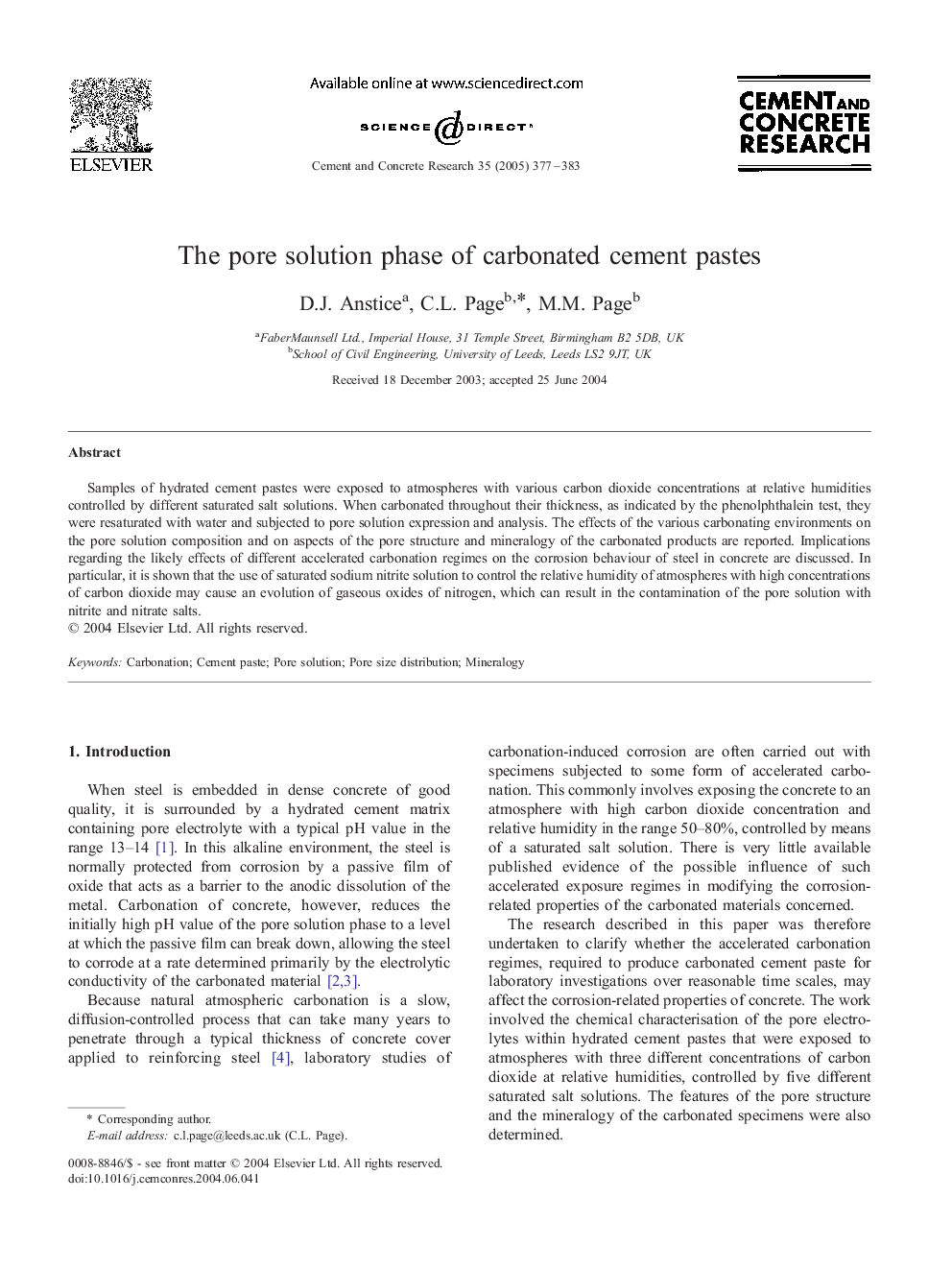| Article ID | Journal | Published Year | Pages | File Type |
|---|---|---|---|---|
| 10622806 | Cement and Concrete Research | 2005 | 7 Pages |
Abstract
Samples of hydrated cement pastes were exposed to atmospheres with various carbon dioxide concentrations at relative humidities controlled by different saturated salt solutions. When carbonated throughout their thickness, as indicated by the phenolphthalein test, they were resaturated with water and subjected to pore solution expression and analysis. The effects of the various carbonating environments on the pore solution composition and on aspects of the pore structure and mineralogy of the carbonated products are reported. Implications regarding the likely effects of different accelerated carbonation regimes on the corrosion behaviour of steel in concrete are discussed. In particular, it is shown that the use of saturated sodium nitrite solution to control the relative humidity of atmospheres with high concentrations of carbon dioxide may cause an evolution of gaseous oxides of nitrogen, which can result in the contamination of the pore solution with nitrite and nitrate salts.
Related Topics
Physical Sciences and Engineering
Engineering
Industrial and Manufacturing Engineering
Authors
D.J. Anstice, C.L. Page, M.M. Page,
